A Short History of the Sunburst Mirror
http://decor-ideas.org 12/11/2014 20:13 Decor Ideas
You can hardly flip a page in a design magazine without coming across one of these gilded creations — but today’s passion for sunburst mirrors is hardly new. With design roots in the Middle Ages and Versailles, the sunburst mirror has a fascinating (and long) history. Read on to satisfy your curiosity about the story behind this popular decor item.
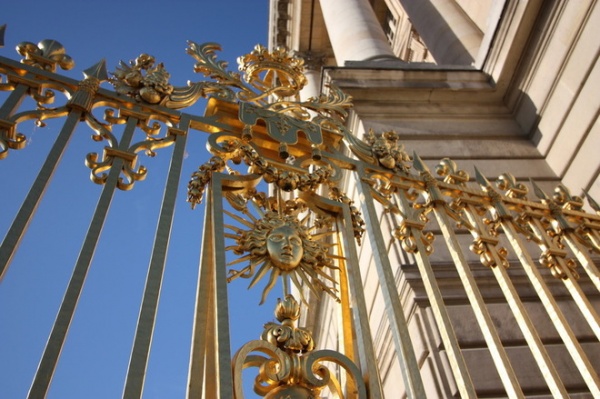
The 17th-century Gate of Honour is one of the noteworthiest features of Versailles. The wrought iron gates are adorned with gold leaf, fleur-de-lis, crowns, cornucopias and an Apollo sun mask, Louis XIV’s personal emblem.
Origin
The sunburst as a decorative motif may have its roots in the halos surrounding figures in medieval religious art. During the 17th century, the Catholic church began using elaborate monstrances — decorative stands used to display the communion wafer — adorned with gilded rays. Churches in Italy (most famously St. Peter’s Basilica in Rome) often had gilded sunbursts above the altar.
There is a rare depiction of a convex mirror with a sunburst motif in the background of the Arnolfini portrait by 15th-century painter Jan van Eyck, suggesting that sunburst mirrors have been around for a long time indeed.
Early mirrors were small and convex; it wasn’t until the late 17th century, when Louis XIV established his own glassworks in France, that the world saw a significant improvement in the quality and size of mirrors.
But even then, mirrors of any kind were rarities — antiques expert Judith Miller notes in her book Furniture that a 40- by 36-inch mirror sold at the end of the 17th century would have cost the equivalent of $36,000 today.
The Sunburst King
Known as the Sun King, Louis XIV chose the head of Apollo surrounded by rays of light as his personal emblem. During his reign many pieces of furniture and architectural features were decorated with the sunburst motif, notes Miller, while the Hall of Mirrors at Versailles took full advantage of the new and improved methods of mirror production.
Photo by Leslie Greene
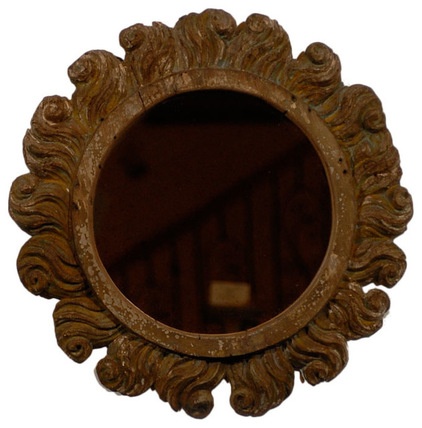
The mirror frame shown here is Italian, from the late 18th or early 19th century.
Antiques dealer William Bloomfield, of Jacqueline Adams Antiques in Atlanta, says early sunburst mirrors were often used in churches as symbols of God overlooking the parishioners.
“I have seen one in the pope’s palace in Avignon, France, which dates back to the 16th century,” he says. Sunburst pieces “often have cloud symbols and rays. The center is sometimes mirrored, reflecting the light — a symbolic gesture. Others may have a carved eye in the center, a dove or an upside-down triangle.”
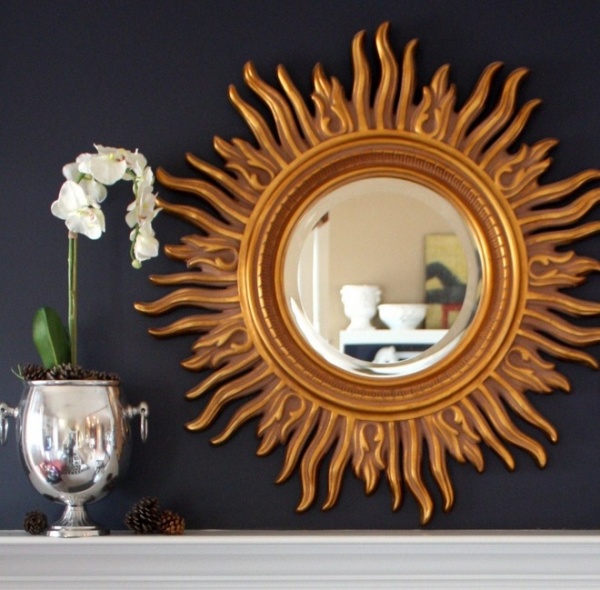
According to design historian John Pile in his classic reference, A History of Interior Design, the early 19th century saw a resurgence in popularity for the small, convex mirrors used centuries before. By this time mirror production had fully taken off, and mirrors became a popular decorative and functional accessory in the home, both in Europe and America.
We can’t be sure when or where the first sunburst mirrors in the style popular today were produced, but a quick search of online auction sites turns up numerous examples dating from the 19th century straight through to today.
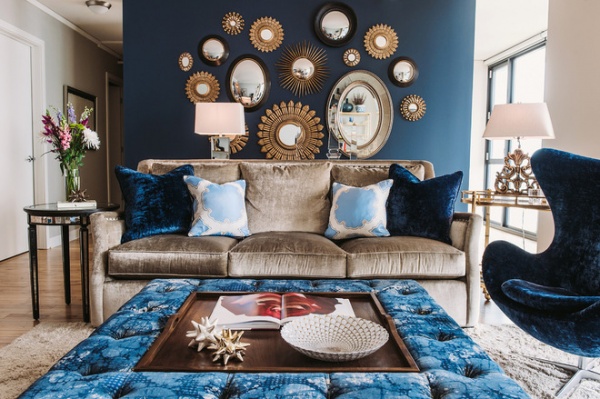
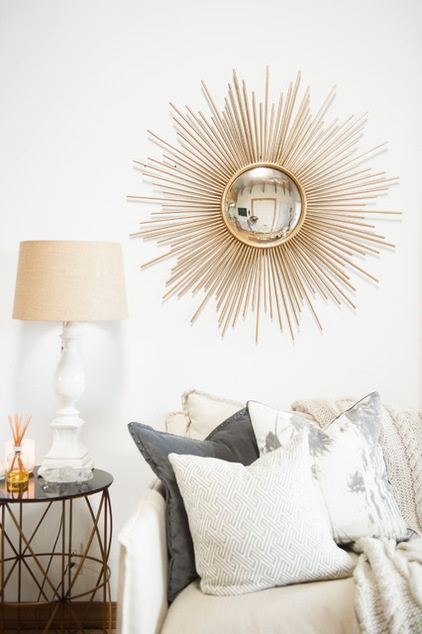
Decorating With Sunburst Mirrors
From petite to grand in scale, simple to ornate, sunburst mirrors continue to captivate. They work on their own as an accent above the bed, on a sliver of wall or above a piece of art.
Or try mixing and matching small sunburst mirrors with other small round and oval mirrors. Hung in a group on a wall painted a rich hue, they make a beautiful alternative to a salon-style art wall.
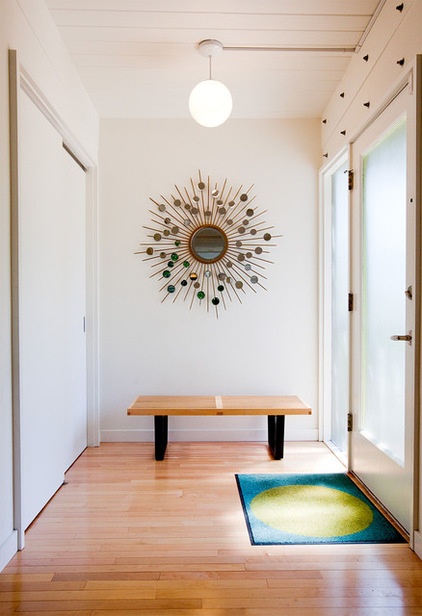
In the 1950s and 1960s, the sunburst mirror got an atomic space-age makeover. The new versions, similar to the one shown here, were sometimes known as starburst mirrors, and usually featured smaller circular mirrors positioned along the slender rays.
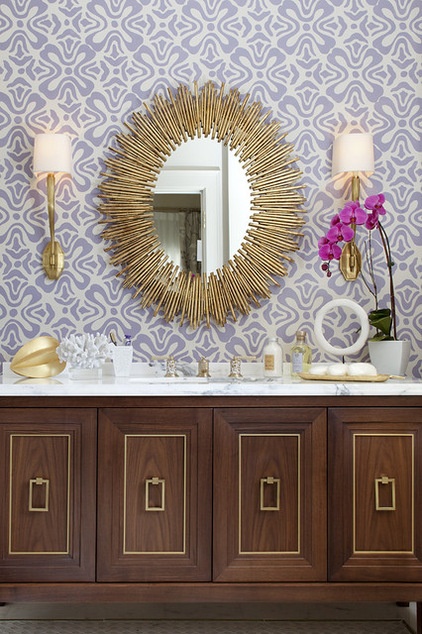
In the bathroom or powder room, consider replacing a traditional mirrored medicine cabinet with a large sunburst mirror for an unexpectedly elegant touch. Complement the mirror with a pair of wall sconces in a finish that matches the sunburst.
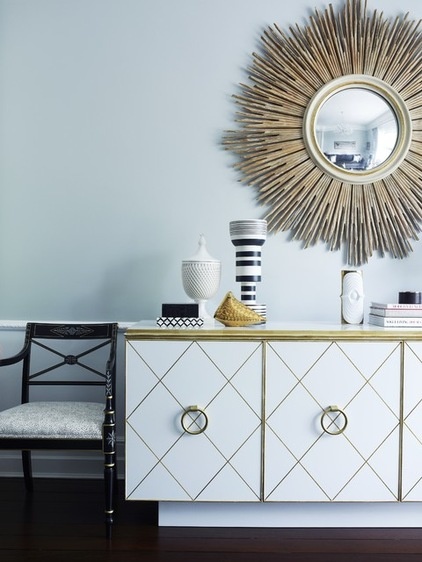
Traditionally gold in color, sunburst mirror frames are available these days in silver, natural wood, a rich color or a mirrored finish. A large one can become the focal point of a room — try a large sunburst over a console or mantel.
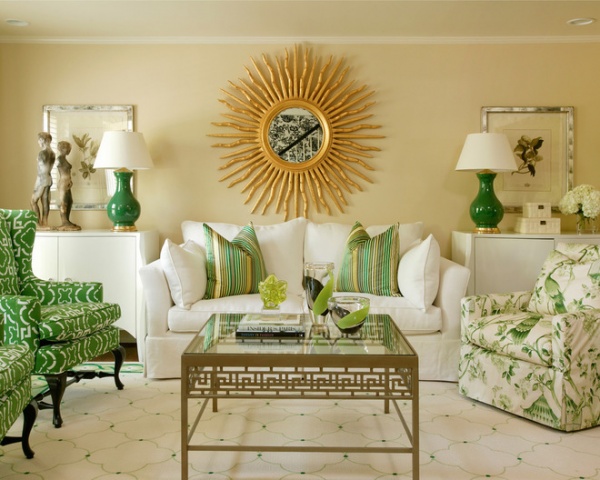
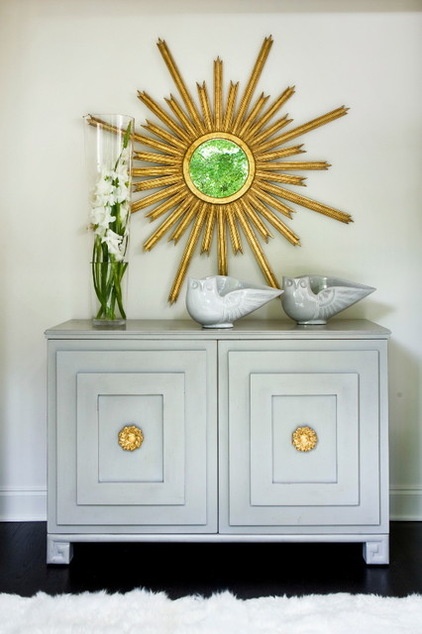
Starburst vs. Sunburst
Are starburst and sunburst mirrors the same thing? Technically, yes. When you hear the term “starburst mirror,” it’s most often referring to a sunburst mirror.
Does a sunburst mirror overlook one of your rooms? We’d love to see it and hear where you found it.
More:
Browse sunburst mirrors in more rooms
Find sunburst mirrors in the Shop section
Related Articles Recommended












